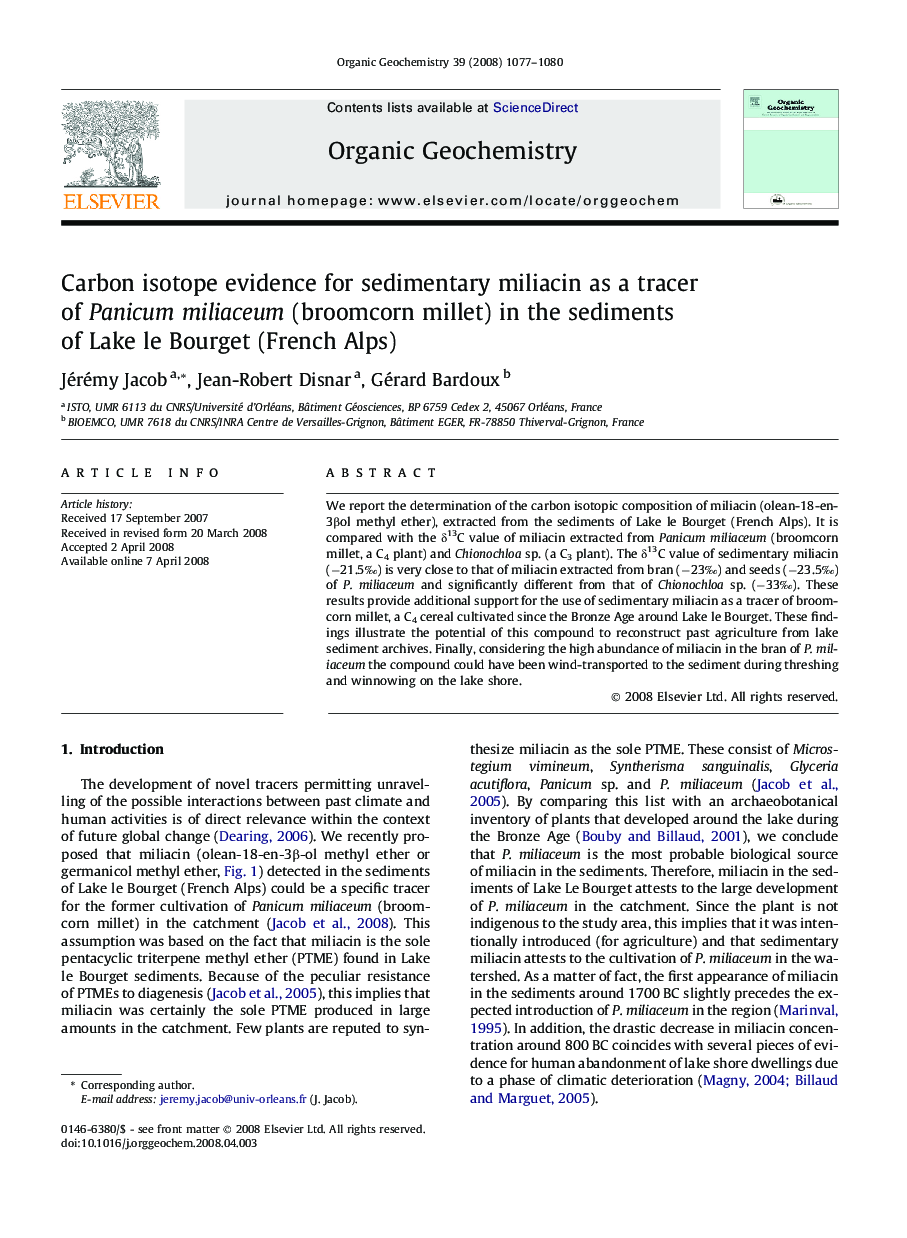| Article ID | Journal | Published Year | Pages | File Type |
|---|---|---|---|---|
| 5162004 | Organic Geochemistry | 2008 | 4 Pages |
Abstract
We report the determination of the carbon isotopic composition of miliacin (olean-18-en-3βol methyl ether), extracted from the sediments of Lake le Bourget (French Alps). It is compared with the δ13C value of miliacin extracted from Panicum miliaceum (broomcorn millet, a C4 plant) and Chionochloa sp. (a C3 plant). The δ13C value of sedimentary miliacin (â21.5â°) is very close to that of miliacin extracted from bran (â23â°) and seeds (â23.5â°) of P. miliaceum and significantly different from that of Chionochloa sp. (â33â°). These results provide additional support for the use of sedimentary miliacin as a tracer of broomcorn millet, a C4 cereal cultivated since the Bronze Age around Lake le Bourget. These findings illustrate the potential of this compound to reconstruct past agriculture from lake sediment archives. Finally, considering the high abundance of miliacin in the bran of P. miliaceum the compound could have been wind-transported to the sediment during threshing and winnowing on the lake shore.
Related Topics
Physical Sciences and Engineering
Chemistry
Organic Chemistry
Authors
Jérémy Jacob, Jean-Robert Disnar, Gérard Bardoux,
